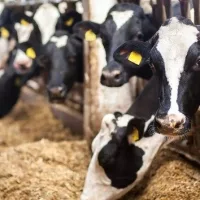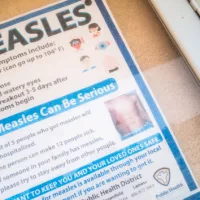
(NEW YORK) — A second type of bird flu has been found in dairy cows for the first time, the U.S. Department of Agriculture announced on Wednesday.
Until recently, all dairy herd detections in the U.S. had involved a form of bird flu, or avian influenza, known as B3.13.
This strain of bird flu, known as D1.1, has only ever previously been detected in wild birds and poultry, indicating that it has only recently spread to cows.
The detection, found in dairy cattle in Nevada, was a result of the USDA’s national milk testing program that launched in early December, according to the agency’s Animal and Plant Health Inspection Service.
“USDA APHIS continues to work with the Nevada Department of Agriculture by conducting additional on-farm investigation, testing, and gathering additional epidemiological information to better understand this detection and limit further disease spread,” the agency said in a statement on its website.
There have been a total of 957 confirmed cattle infections in 16 states, with 36 new infections in the last 30 days in California and Nevada, the latest USDA data showed.
D1.1 has also been shown to be potentially dangerous to humans. Of the 67 human cases of bird flu detected in the U.S. beginning in April 2024, one of the only patients infected with D1.1 was in Louisiana.
The Louisiana patient died earlier this year, although health officials said the patient was over age 65 and had underlying health conditions.
Additionally, a 13-year-old girl in British Columbia, Canada, was admitted to the intensive care unit with the same strain in November.
The Louisiana patient was exposed to a backyard flock, and the Canadian teenager had an unknown exposure.
The CDC said in a statement on Thursday that it is continuing to “monitor this situation closely” for any signs that risk to human health has changed.
“Risk remains low despite what appears to be the introduction of a different genotype of avian influenza A (H5N1) virus into dairy cows based on the USDA’s Animal and Plant Health Inspection Service Stakeholder Registry email,”
the statement said. “CDC continues to monitor this situation closely for signs that would indicate the risk to human health has changed.”
The CDC noted that the risk to the general public remains low, and that there is no evidence of human-to-human spread.
The USDA issued a federal order late last year, asserting that raw milk samples nationwide be collected and shared with the agency in order to test for bird flu.
The order marked the start of the agency’s National Milk Testing Strategy, a program intended to boost surveillance of the nation’s milk supply and dairy herds and increase understanding of how bird flu is spreading.The USDA said the D1.1 detection in dairy cows “does not change USDA’s [bird flu] eradication strategy and is a testament to the strength of our National Milk Testing Strategy.”
APHIS said it plans to publish a technical brief on the findings on its website and post the sequence data on an open-access databank in the coming week.
ABC News’ Youri Benadjaoud contributed to this report.
Copyright © 2025, ABC Audio. All rights reserved.













